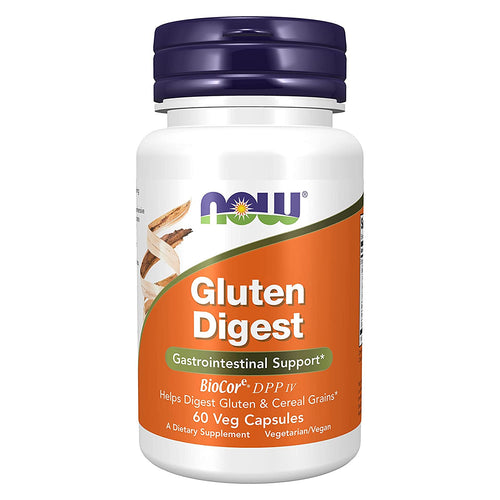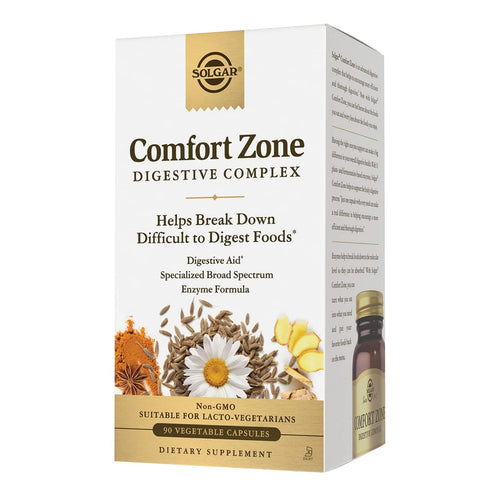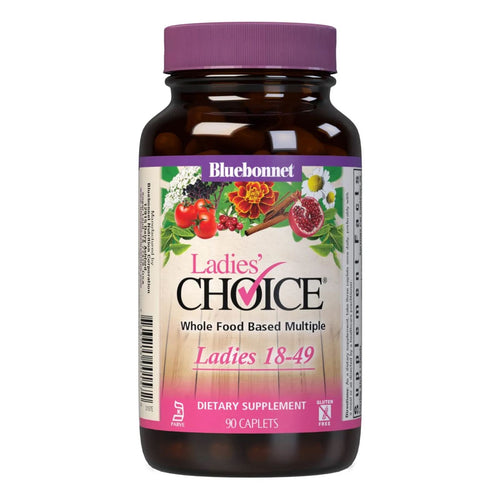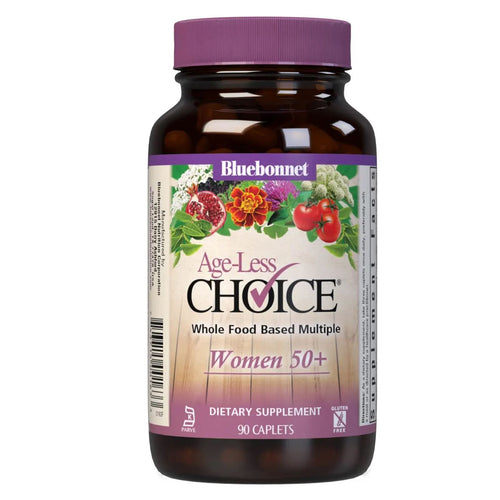Gluten is a naturally occurring protein found in wheat, barley, rye and crossbreeds of these grains. Other grains such as corn, rice and quinoa also contain some but far less gluten. Gluten has elastic and adhesive property and aids bread in helping it to maintain its shape when rising and whilst baking. It also has a chewy texture and is low in cost which is why it is so commonly used in food processing.
For some, a gluten-free diet is a necessity, a lifestyle even, medically recommended in order to maintain their health. But, in recent years, consumers have opted to partake in this diet trend for their own reasons. A survey conducted in 2018 reported 33% of Canadians and 26% of Americans believe a gluten-free diet is healthier. While many scientists are still trying to determine the positive and negative effects of a gluten-free diet, we have created a list of products that are gluten-free friendly.
The Gluten-Free Diet
According to the World Health Organization a healthy diet is high in fruits, vegetables, whole grains, fish, legumes, nuts and low-fat or non-fat dairy along with dietary fiber and polyunsaturated fatty acids. While fat, salt, sugars and saturated fatty acid intake should be low.
Individuals who suffer from Celiac Disease or have a gluten intolerance have inflammation that can damage their small intestine. This can lead to difficulties absorbing nutrients. At initial diagnosis, patients are often shown to have a malabsorption of iron, calcium, zinc, vitamin B12 and folate; and vitamin A, D, E and K. However, even after following a strict gluten-free diet, they often remain deficient in iron, calcium, zinc, vitamin B12, folate and vitamin D. They also developed magnesium, selenium and vitamin C deficiencies; along with an excess intake of sugars and fats, and a low intake of proteins and dietary fiber. How can this be?
Gluten-free products or products formulated to be gluten free are often similar in composition. To replace the gluten-rich grains like wheat, rye and barley, manufacturers use corn, cassava, potato, rice and soy. In general, gluten-free products are higher in sugar, fat and sodium than their gluten-filled counterparts. In fact, gluten-free bread averages at least twice the amount of fat as regular bread. They also are significantly higher in sodium and carbohydrates.
In the 1950s, federal and state laws were enacted in which packaged goods manufacturers for products such as cereal or bread were required to fortify their products with nutrients. To this day, if you pick up a box of cereal, muffin mix, a loaf of bread or similar you can often see if it is “fortified” with nutrients. Gluten-free products are typically non-processed products, meaning they are not fortified. This means they are also lower in folate, iron, niacin, riboflavin and thiamin. Gluten-free products are generally low in protein and dietary fiber, and the glycemic index of these types of products varies.
A gluten-free diet can alleviate symptoms and promote intestinal healing in those with gluten-related disorders. However, it can also lead to long term malabsorption and nutrient deficiencies. Some argue that the nutrient deficiencies of patients with Celiac or other gluten-sensitive ailments can be attributed to intestinal damage. However, experts argue this is not the case. Even in patients who have had 10 years of restrictive dieting and recovery of their intestinal lining, they still presented abnormally high deficiencies of some nutrients.
The Gluten-Free Gap
Whether on the gluten-free diet for medical reasons, taking it for a test run, or just seeing what all the fuss is about there is one thing that is certain: a gluten-free diet has some gaps. Fortunately, there are ways to bridge this gap such as adding in a nutritional supplement or incorporating more nutrient dense foods to your diet. Here are some products that will help bridge the gluten-free gap.
Vibrant Health Green Vibrance
 As a company, Vibrant Health is a trusted health supplement manufacturer. They have full disclosure labels to ensure their products are the most informative, complete and best possible. Their promise to consumers is truth, trust and transparency. They prefer to use natural and organic ingredients and many of their products are gluten-free. Green Vibrant contains 60+ hand-sourced ingredients to support immunity, nutrition, digestion and circulation.
As a company, Vibrant Health is a trusted health supplement manufacturer. They have full disclosure labels to ensure their products are the most informative, complete and best possible. Their promise to consumers is truth, trust and transparency. They prefer to use natural and organic ingredients and many of their products are gluten-free. Green Vibrant contains 60+ hand-sourced ingredients to support immunity, nutrition, digestion and circulation.
Green Vibrance is gluten-free, vegetarian and vegan, non-GMO and plant based. It is low in carbohydrates and sugar, and high in dietary fiber. It also has all the vital nutrients a gluten-free diet typically lacks like vitamin B12, vitamin D, folate and calcium. There is also the added bonus of 25 billion probiotics, 8 digestive enzymes, 14 antioxidants and a whole lot of plant-based nutrition. Green Vibrance is available in multiple sizes to last from 15 to 83 days and single serve packets, and comes in two flavors.

Now Gluten Digest
For those who are not wanting to completely change their entire diet but just focus on more gluten-free friendly products Gluten Digest may be a helpful supplement. Gluten Digest is made with Dipeptidyl peptidase IV, a digestive enzyme that can be used alone or along with other digestive enzymes to help break down proline peptides which can be hard to digest. Gluten Digest also has the digestive enzymes amylase and glucoamylase which aid in breaking down carbohydrates. Everyone needs some digestive help sometimes and even if you aren’t on a gluten-free diet this product could possibly help you to digest those more difficult peptides.
*Note: If you have Celiac Disease consult your physician before use.

Solgar Comfort Zone Digestive Complex
Solgar is an exceptional brand when it comes to quality. All their products are created using only the finest ingredients and undergo multiple quality control processes. Generally speaking, anyone who suffers from a gluten-based digestive ailment already has some difficulties breaking down foods. Solgar’s Comfort Zone Digestive Complex contains 11 digestive enzymes: alpha galactosidase, amylase, protease, bromelain, cellulase, invertase, lactase, lipase, maltase, papain, and pectinase/phytase. It also contains a unique blend of herbs that are often used to calm digestive upset and relax digestive muscles. The herbs are cumin, fennel extract, chamomile, ginger extract, and anise powder.
Bluebonnet Multivitamin & Mineral
Have you considered it may be time to upgrade your daily multivitamin? Gluten-free diets can often leave the body lacking the nutrients it needs to operate. A good way to supplement your diet is to take a daily multivitamin. Bluebonnet has created one of the most complete multivitamins available. Their Choice line of men and women’s multivitamins is whole-food based, vegetarian and gluten-free. There is even a distinction between the ingredients for men and women, as well as the 50+ crowd. This multi contains all the necessary vitamins and minerals along with additional blends geared towards your gender and age.
The Bluebonnet Ladies Choice 18 - 49 multi contains a heart health blend, advanced female health blend, female health flower blend, urinary health blend and whole food phytonutrient blend. With the Bluebonnet Age-Less Choice Women 50+ there is the same heart health and whole food phytonutrient blend, but an advanced female blend geared towards menopause along with a brain health and joint health blend. The Bluebonnet Mens Choice 18 - 49 has an advanced heart health blend, male stamina/prostate health blend, and a whole food phytonutrient blend. In the Bluebonnet Age-Less Choice Men 50+ there is the same whole food phytonutrient blend and an improved heart health and prostate health blend, as well as the addition of a brain health and joint health blend.
How To Identify Gluten-Free Products
The FDA now requires certain regulations for products that are labeled as “gluten-free,” however, their monitoring stops there. Products that are labeled to be free of gluten are not required to bear a unique identifier, symbol or verbage. However, there are a few ways to tell if a product is gluten-free.
1. Naturally Gluten-Free Food
Many foods are naturally gluten-free. A good rule of thumb is that natural, unprocessed foods are safe. Foods such as fruits and vegetables; beans, seeds, legumes and nuts (unprocessed); eggs; unprocessed meat, fish and poultry; and most low-fat dairy products. Amaranth, arrowroot, buckwheat, flax, millet, tapioca, teff, soy, and sorghum are alternative grain options that are naturally gluten free.
2. Certified Gluten-Free Logo
Many brands and manufacturers choose a third-party independent certification program who will review and certify their product as Gluten-Free. The FDA does not endorse, accredit or recommend any one in particular. However, there are four programs that are endorsed by organizations such as the Celiac Disease Foundation and the Mayo Clinic.
3. Verify the Label
This one may seem easy but it takes extra effort. If you are uncertain if a product is gluten free or not, or a product claims to be gluten-free but you don’t see one of the above certified logos and want to verify: read the label. Manufacturers are not required to place the Gluten-Free designation in a specific location, and some, though the product may be gluten-free, won’t have an identifier at all. Read the ingredients list and look for the keywords.
The following keywords mean a product is not gluten-free: Wheat, Barley, Rye, Triticale (a cross between rye and wheat), Oats; Durum, Einkorn, Emmer, Kamut or Spelt (which are different varieties of wheat); and flour products like Enriched Flour, Farina, Graham Flour, Self-Rising Flour, and Semolina.
Common Foods that May Contain Gluten:
- Beer, Ale, Porter, Stout
- Breads
- Bulgur Wheat
- Cakes & Pies
- Candies
- Cereals
- Communion Wafers
- Cookies
- Crackers
- Croutons
- French Fries
- Gravies
- Hot Dogs & Processed Lunchmeat
- Imitation Meat & Seafood
- Malt, Malt Flavoring or Malt Products
- Matzo
- Pastas
- Salad Dressings
- Sauces (Soy Sauce)
- Season Rice Mixes
- Seasoned Snack Foods
- Self-Basting Poultry
- Soups, Bouillon or Soup Mixes
- Vegetables in Sauce




